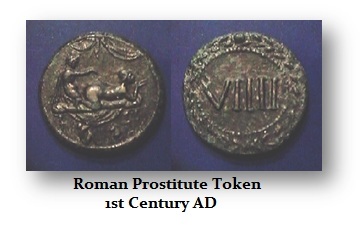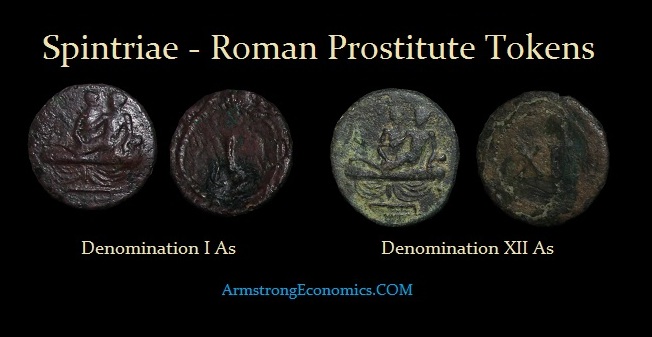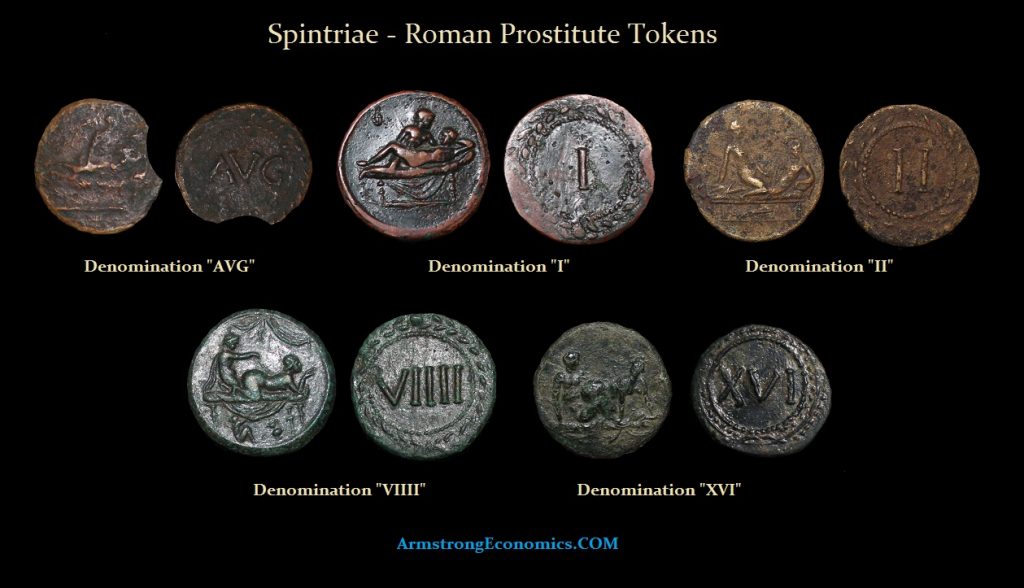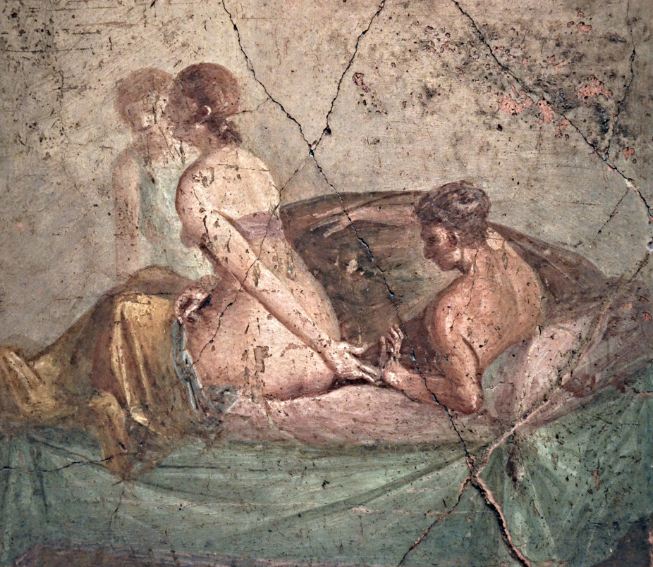 The Lost City of Pompeii preserved an affluent city which included everything from shops, fast food, bankers, and of course what they call the oldest profession in recorded history – prostitution. In the year 79 AD, Italy’s Mt. Vesuvius erupted with superheated ash that rained fiery death upon the people of the city. In the process, much has been preserved. The graffiti written on the wall of Pompeii was quite to the point and sex was not something that was just talked about quietly at home when nobody else was around.
The Lost City of Pompeii preserved an affluent city which included everything from shops, fast food, bankers, and of course what they call the oldest profession in recorded history – prostitution. In the year 79 AD, Italy’s Mt. Vesuvius erupted with superheated ash that rained fiery death upon the people of the city. In the process, much has been preserved. The graffiti written on the wall of Pompeii was quite to the point and sex was not something that was just talked about quietly at home when nobody else was around.
You can visit the brothel in Pompeii which is fairly intact. Most of the wall paintings have been removed and will be found the Museum of Naples. Besides the paintings, prostitute tokens have survived. Yet these are by no means confined to Pompeii. These prostitute tokens are known as “spintriae” and they are found throughout the empire. They have even been found in London.
The name come from the contemporary historian Suetonius who used the word Spintria referring to young male prostitutes. It comes from the from Greek σφιγκτήρ (sphinktḗr, [anal] sphincter). The word tended to infer sexual acts that were outside of normal boundaries. The term has been applied to Roman prostitute tokens regardless of the actual act depicted.
The spintria are slightly smaller than a modern day American quarter. They were struck from bronze or brass beginning in early first century AD. There are various designs each depicting a sexual act on one face and a Roman numeral – ranging from I to XVI. While it is not clear what the numerals imply. It has been suggested that the cost is the numeral reflected in a Roman As and the various acts varied in cost.
It is believed that this “Spintriae” were used in place of official Roman currency in brothels, where they could be used to pay prostitutes in exchange for sexual services. There have been some discoveries which support the numerals of the coins with fees. There was graffiti found on the walls of a bathhouse in suburban Pompeii which read: “Si quis hic sederit, legat hoc ante omnia. Si qui futuere voluit Atticen, quaerat a(ssibus) XVI.” This translates to “If any is sitting here, let him read this before anything. If he is someone who wants to fuck Attike, he needs 16 asses”
Perhaps the fact that not everyone spoke Latin if they traveled from provinces. Pictures would then provide a way or ordering specific sex acts and language was then not necessary. What does create some confusion is that the same sex act appears on coins with a different numeral on the reverse. Here are two tokens which appear to be the same sexual act yet the denomination is just one As on the left token and XII As on the right token. It has been suggested that perhaps the fee declined the further one traveled from Rome. It does seem a bit odd that labor wages would be significantly less outside of Rome just as is the case in modern times for London, New York, or Tokyo. Many of the scenes on the coin are identical to the surviving Pompeiian murals. They have often been discovered in Roman excavated bathhouses. Bathhouses were communal and they were certain places where sex was common perhaps even more so than any brothel.
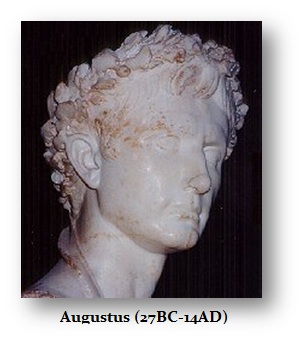 The writings of Roman historian Cassius Dio did touch on the subject. He suggested that the coins may also have been used to circumvent a law, upheld by then-Emperor Tiberius, that equated bringing currency bearing the emperor’s image into a brothel with treason. Many have dismissed this and claimed that they were to mock Tiberius (14-37AD) who had a reputation for being sexually promiscuous.
The writings of Roman historian Cassius Dio did touch on the subject. He suggested that the coins may also have been used to circumvent a law, upheld by then-Emperor Tiberius, that equated bringing currency bearing the emperor’s image into a brothel with treason. Many have dismissed this and claimed that they were to mock Tiberius (14-37AD) who had a reputation for being sexually promiscuous.
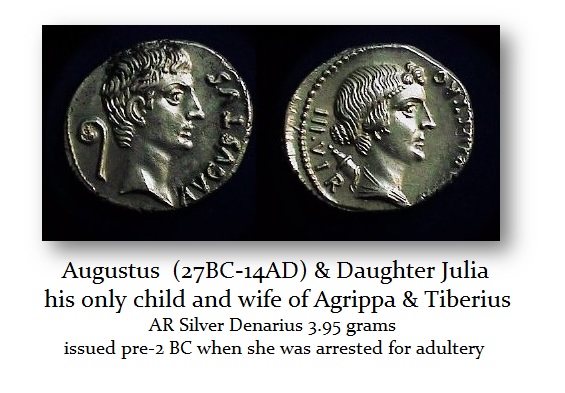 However, what has been overlooked here is his predecessor – Augustus (27BC-14AD). Augustus was very prudish and he was upset with the moral fabric in Rome. This was the time when Ovid (43–17 BC) wrote his work and Rome became like the 1960s – free love and orgies. Augustus had his own daughter, Julia, sent into exile for her sexual exploits. She was the wife of Tiberius and while he was away, she engaged in orgies. They so disgusted her father, she was sent into exile. Ovid was also sent into exile for advocating pleasure. He was banished off to the Black Sea in 8 AD to Tomis, which is now Constanţa, in Romania.
However, what has been overlooked here is his predecessor – Augustus (27BC-14AD). Augustus was very prudish and he was upset with the moral fabric in Rome. This was the time when Ovid (43–17 BC) wrote his work and Rome became like the 1960s – free love and orgies. Augustus had his own daughter, Julia, sent into exile for her sexual exploits. She was the wife of Tiberius and while he was away, she engaged in orgies. They so disgusted her father, she was sent into exile. Ovid was also sent into exile for advocating pleasure. He was banished off to the Black Sea in 8 AD to Tomis, which is now Constanţa, in Romania.
Augustus sent Julia into exile under the harshest conditions. She was confined on the island of Pandateria, with no men in sight. She was also forbidden even to drink wine. The island itself measured only a little more than a half-square mile. Nobody was allowed to visit her without Augustus’ express permission. Scribonia, Julia’s biological mother, accompanied her into exile. August was said to have regretted ever have a daughter. Only after five years was Julia allowed to return to the mainland. Still, Augustus never forgave her and ordered her to remain in Rhegium. He even denied her the right to be buried with him or his family.
Tiberius was famously rumored to be into the unusual sex on his villa on the Isle of Capri. Some have argued that they were just mockery of Tiberius. This seems to be not plausible. They are found throughout the Empire and if they were some local mockery of the Emperor, they would not be so widespread with a wide variety. Regardless of the truth of Tiberius’s sexual exploits on Capri, it is far more likely that indeed if anyone outlawed the payment for sex with a coin that had the image of the Emperor, we should not look at Tiberius, but to Augustus. The sparse historical accounts of the use of the Spintriae makes sense given Ovid was banished and Julia. Augustus also passed family laws forbidding men to remain bachelors.

The more like scenario given they are found even in London, is that it was indeed treason to pay for sex with a coin that bore the image of the Emperor – and they all did. The easy solution would be to coin tokens and the patron would then buy them and pay the prostitute thereby no law was violated. Tiberius was frugal. He also notoriously frugal in his expenditures. He was so frugal, he issued very few coins and they tended to be void of any real variety. Consequently, Tiberius never raised taxes during his reign and in fact lowered Roman taxes when Cappadocia became a province (located in modern Turkey). Tiberius’ frugality also allowed him to be liberal in helping the provinces as when a massive earthquake destroyed many of the famous cities of Asia. Nonetheless, Tiberius seems to have detested the politics and he withdrew from Rome to live on Capri. Tiberius was never again to return to the city of Rome. Tiberius created deflation by simply refusing to mint coins. We also find tokens being struck to supplement the money supply due to the lack of coins.

